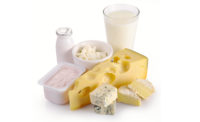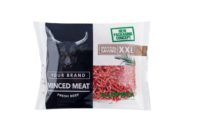StePac L.A., Ltd., Israel, presented the company’s four pillared sustainability strategy for fresh produce packaging. The advanced strategy effectively mitigates the necessity of climate-positive plastic packaging, addressing the critical problem of food waste.
The new strategy addresses key areas of manufacturing, use and recycling.
“Plastic packaging plays a critical role in the fresh produce and food industry, not least because of its ability to dramatically curtail food waste,” says Gary Ward, business development manager. “Our technology is based on four pillars of sustainability designed to significantly lighten the environmental footprint of plastic packaging.”
First pillar—Use plastic packaging only if it has positive climate effect.
StePac’s Xtend modified atmosphere packaging is “climate positive,” extending shelf life and reducing waste in the fresh produce supply chain while saving more carbon emissions than it generates.
The company is said to be a pioneer in developing packaging solutions that, for example, enabled Peruvian exporters to make the transition from air freight to sea freight of white asparagus to Europe. This resulted in a reduction of 5,500 kg CO2 emissions per ton of product shipped.
In another example, Xtend packaging is also said to be an ideal replacement for waxed cartons in the shipment of broccoli from Salinas Valley, Calif., to New York City. The result was a net saving of 144 kg per ton of broccoli — a 40% reduction.
“Rejecting the use of such innovative packaging for similar supply chains would increase carbon emissions and drag the industry a big, unsustainable — and expensive — step backwards,” says Ward.
Second pillar-—Climate-positive packaging must be as lean as possible.
Use of StePac's lean top-seal film reaps the dual benefits of extending shelf life while saving 20-30% plastic over conventional clamshells.
“We use films that are typically 20-35 microns thick for both pre-formed bags and automated packaging — considerably thinner than most alternatives,” says Ward.
StePac’s patented Xflow packaging system was developed to facilitate a shift to automation for packaging bulk produce, reducing plastic use by as much as 40% in comparison to manual packing in pre-formed bags.
Third pillar—Mechanically recyclable packaging should support a circular economy.
Mechanical recycling recovers plastics waste via processes encompassing grinding, washing, separating, drying, re-granulating and compounding to keep polymers intact. Although many structures can be mechanically recycled, only pure streams of plastic types such as PET bottles and polyethylene permit multiple use in the same or similar products.
StePac boasts a range of homopolymer-based products with modified atmosphere properties that can be mechanically recycled to support a resource-efficient looped system. These include polyethylene-based bulk packaging products, polyethylene-based standing pouches and PET-based top-seal solutions, all suitable for produce items and supply chains that benefit from films having a low water-vapor transmission rates.
Fourth pillar—Chemical recycling should complement mechanical recycling.
Chemical recycling converts plastic materials into their initial monomers, allowing them to be reborn into new plastic products.
“Replacing these sophisticated plastic structures without increasing waste is no simple task,” adds Ward. “We have multilayered plastic structures that conform to chemical recycling, a process [that] is complementary to mechanical recycling systems in facilitating a true circular economy. This is the direction the industry is taking, and StePac’s goal is to lead it toward a more sustainably sound phase.”







